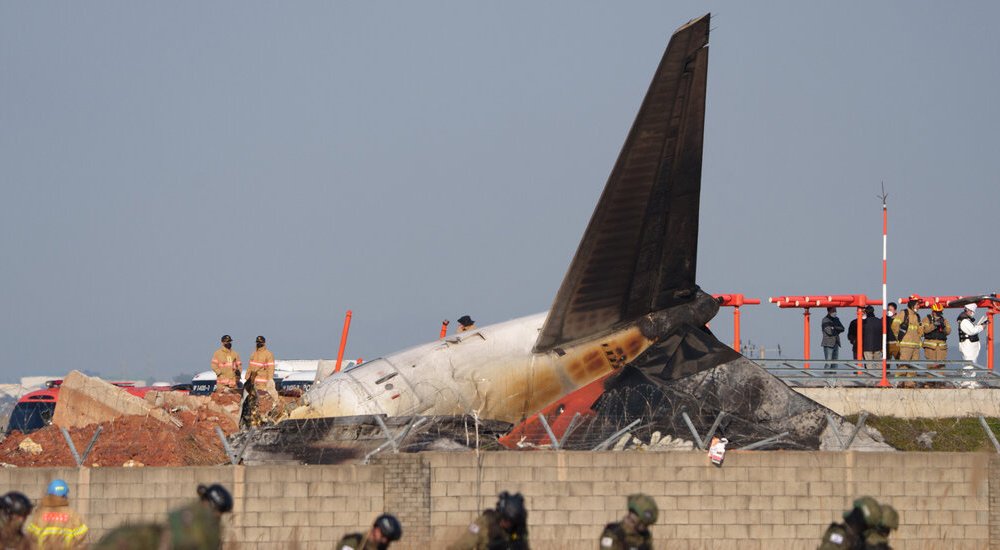One particular subject of investigations into the crash, which involved a Boeing 737-800, is a concrete wall at the Muan airport that contained an antenna array used to guide planes during landing. Jeju Air’s Flight 7C2216 skidded into the wall at high speed and exploded, killing all but two of the plane’s passenger and crew.
It was the worst aviation disaster on South Korean soil and the deadliest worldwide since that of Lion Air Flight 610 in 2018, when all 189 people onboard died.
Korea Airports Corporation’s safety standards have come into question, with critics arguing that if the antenna array had been installed on a more easily breakable mount, as in many other airports, the disaster might have been less severe.
Government officials have said that the structure was built in accordance with safety regulations. But an inspection by the transportation ministry revealed that seven of the nation’s airports, including the one in Muan, did not meet safety standards and needed to upgrade their runway facilities.
On Wednesday, the transportation ministry said it would replace the existing concrete structure in Muan with one that is easier to break. The ministry also said that plans were underway to upgrade localizers at airports to be made of lighter, steel structures and extend safety zones at the end of some runways to a minimum of almost 790 feet. The Muan runway is due to remain closed until mid-April.














































